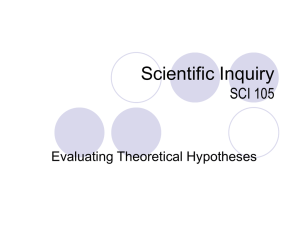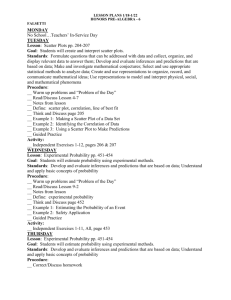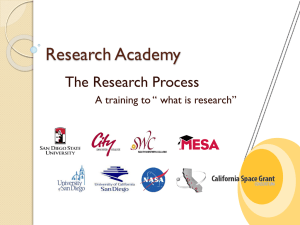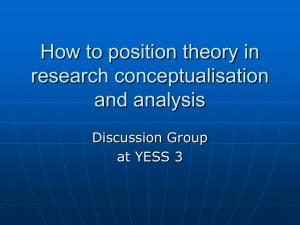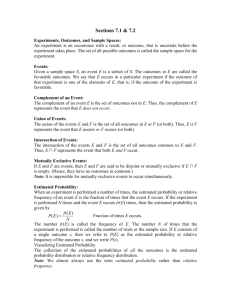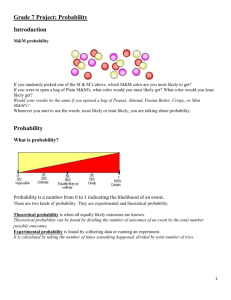PHIL 481
advertisement
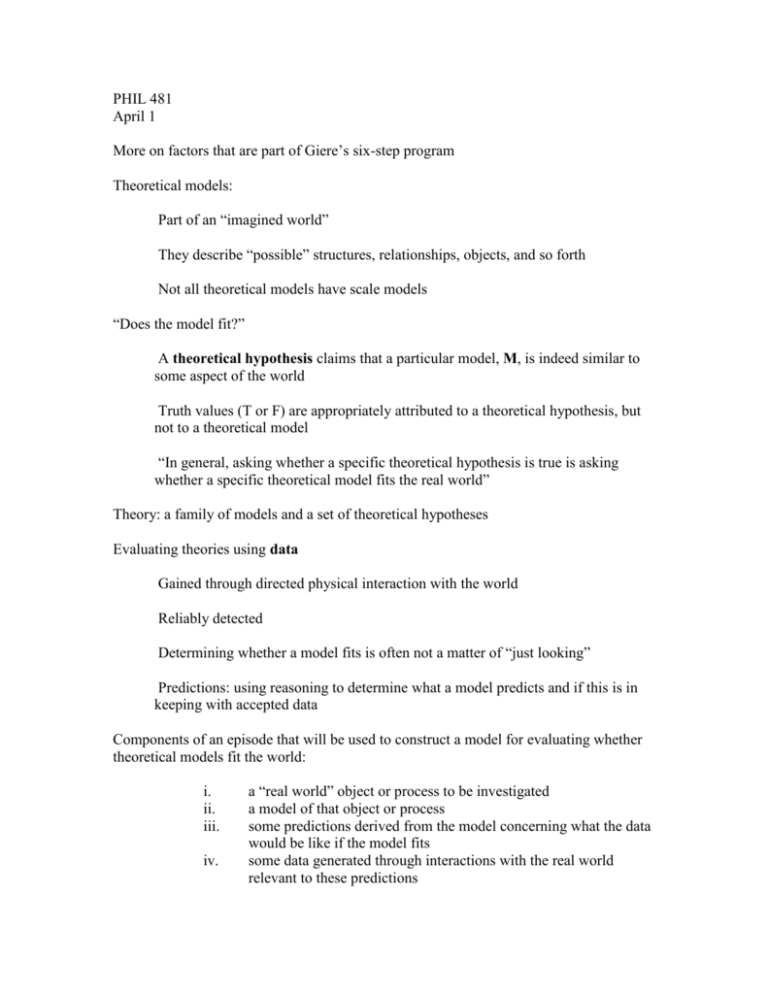
PHIL 481 April 1 More on factors that are part of Giere’s six-step program Theoretical models: Part of an “imagined world” They describe “possible” structures, relationships, objects, and so forth Not all theoretical models have scale models “Does the model fit?” A theoretical hypothesis claims that a particular model, M, is indeed similar to some aspect of the world Truth values (T or F) are appropriately attributed to a theoretical hypothesis, but not to a theoretical model “In general, asking whether a specific theoretical hypothesis is true is asking whether a specific theoretical model fits the real world” Theory: a family of models and a set of theoretical hypotheses Evaluating theories using data Gained through directed physical interaction with the world Reliably detected Determining whether a model fits is often not a matter of “just looking” Predictions: using reasoning to determine what a model predicts and if this is in keeping with accepted data Components of an episode that will be used to construct a model for evaluating whether theoretical models fit the world: i. ii. iii. iv. a “real world” object or process to be investigated a model of that object or process some predictions derived from the model concerning what the data would be like if the model fits some data generated through interactions with the real world relevant to these predictions We do not speak of models as being ‘true’ or ‘false’ because they will fit the real world only in some respects and then only to a specified degree of accuracy Figure 2.9 Model fits/doesn’t fit REAL WORLD MODEL Hypothesis True/False Observation/ Reasoning/ Experimentation Calculation DATA PREDICTION Agree/Disagree On the left side of the diagram are things and processes that are physical (real world, observation, data) On the right side, the objects are symbolic not physical Step 1: Identify the aspect of the real world that is the focus of the report Step 2: Identify a theoretical model whose fit with the model is at issue Step 3: Identify a prediction, which is based on the model, that says what data should be obtained if the model does have a good fit Step 4: Identify the data that actually have been obtained by observation or experimentation involving the real world objects the model is supposed to fit. Step 5: Does the data agree or disagree with the model’s predictions. If not, this is negative evidence: evidence that the model does not fit the real world and that the theoretical hypothesis is false. If it does, proceed to the next step… Step 6: Was the prediction likely to agree with the data even if the model does not fit the real world? If so, the data are inconclusive in terms of whether the model fits; if not, they are positive evidence that the model does fit and that the theoretical hypothesis is true. Cases discussed: The model of DNA as a triple helix (as W & C constructed it) and the double helix model; the Ptolemaic v. Copernican models of the (then known) universe; Intelligent Design v. Darwinian evolution
